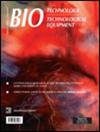Autologous ovarian platelet rich plasma treatment improves oocyte and embryo quality: a before-after prospective study
IF 1.4
4区 生物学
Q4 BIOTECHNOLOGY & APPLIED MICROBIOLOGY
引用次数: 2
Abstract
Abstract Platelet-rich plasma (PRP) is used for successful regeneration of female reproductive tissues. However, little is known about the effect of ovarian PRP treatment on oocyte and embryo quality. The objective of our study was to assess the role of autologous ovarian PRP treatment on ovarian reserve and number and quality of oocytes and embryos in women with poor ovarian response (POR) undergoing in-vitro fertilization cycles. A total of 66 women with POR were treated with ovarian PRP injection in two subsequent menstrual cycles. The antral follicle counts, serum anti-Mullerian hormone, follicle-stimulating hormone levels, fertilization rate, number and quality of oocytes, and embryos were assessed and compared between the cycle before and after PRP treatment. Ovarian PRP treatment resulted in insignificantly lower follicle-stimulating hormone levels, significantly higher antral follicle count, anti-Mullerian hormone, number of retrieved oocytes, and insignificantly higher fertilization rate. However, the mean number of Day 5 embryos (2.19 ± 1.45 vs. 1.58 ± 1.30, p = 0.01), the percentage of high-quality oocytes (45.29% ± 42.40% vs. 15.21% ± 30.24%, p < 0.01) and the percentage of grade-I blastocysts (52.10% ± 37.94% vs. 12.86% ± 22.97%, p < 0.01) were significantly higher after PRP treatment in comparison to the pretreatment period. Moreover, the mean MII oocyte quality (1.60 ± 0.54 vs. 2.31 ± 0.63, p < 0.01) and mean blastocyst quality (1.53 ± 0.45 vs. 2.42 ± 0.63, p < 0.01) were significantly improved in the post-treatment period. In conclusion, the applied autologous ovarian PRP treatment in poor responders may significantly improve oocyte and embryo quality.自体卵巢富血小板血浆治疗改善卵母细胞和胚胎质量:一项前后前瞻性研究
富血小板血浆(PRP)用于女性生殖组织的成功再生。然而,目前对卵巢PRP处理对卵母细胞和胚胎质量的影响知之甚少。本研究的目的是评估自体卵巢PRP治疗对体外受精周期卵巢反应差(POR)女性卵巢储备、卵母细胞和胚胎数量和质量的作用。共有66名患有POR的妇女在随后的两个月经周期中接受卵巢PRP注射治疗。评估和比较PRP治疗前后周期的卵泡计数、血清抗苗勒管激素、促卵泡激素水平、受精率、卵母细胞数量和质量、胚胎数量和质量。卵巢PRP治疗导致促卵泡激素水平无显著降低,窦卵泡计数、抗苗勒管激素、卵母细胞数量显著升高,受精率无显著升高。然而,PRP处理后的第5天平均胚胎数(2.19±1.45比1.58±1.30,p = 0.01)、优质卵母细胞百分比(45.29%±42.40%比15.21%±30.24%,p < 0.01)和一级囊胚百分比(52.10%±37.94%比12.86%±22.97%,p < 0.01)均显著高于预处理期。治疗后各组平均MII卵母细胞质量(1.60±0.54比2.31±0.63,p < 0.01)和囊胚质量(1.53±0.45比2.42±0.63,p < 0.01)均显著提高。综上所述,对不良反应者应用自体卵巢PRP治疗可显著改善卵母细胞和胚胎质量。
本文章由计算机程序翻译,如有差异,请以英文原文为准。
求助全文
约1分钟内获得全文
求助全文
来源期刊

Biotechnology & Biotechnological Equipment
工程技术-生物工程与应用微生物
CiteScore
3.10
自引率
0.00%
发文量
90
审稿时长
1 months
期刊介绍:
Biotechnology & Biotechnological Equipment (B&BE) is an international open access journal publishing cutting-edge research. A modern world requires modern biotechnology and nanobiology. The journal is a forum that provides society with valuable information for a healthy and better life and promotes “the Science and Culture of Nature”.
The journal publishes original research and reviews with a multidisciplinary perspective; expanded case reports with a focus on molecular medical research and advanced practice in evidence-based medicine are also considered.
 求助内容:
求助内容: 应助结果提醒方式:
应助结果提醒方式:


